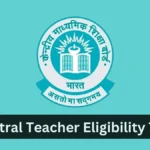What is Niti Aayog?
The NITI Aayog has taken the place of the Planning Commission, which has a legacy dating back 65 years. The Planning Commission’s value and significance had been questioned for a longer period of time. The alternative appears to be more suitable and sensitive to the country’s current economic needs. It is a pivotal organization that is bound to play a vital role in the country’s development process.

COMPOSITION
Chairperson: Prime Minister
Vice-Chairperson: To be appointed by Prime-Minister
Governing Council: Chief Ministers of all the states and Lt. Governors of Union Territories
Regional Council: To address specific regional issues, it should be composed of Chief Ministers and Lt. Governors, chaired by the Prime Minister or his nominee.
Adhoc Membership: Two members in ex-officio capacity from leading research institutions on a rotating basis.
Ex-officio membership: maximum four from Union Council of Ministers to be nominated by the Prime Minister
Chief Executive Officer: Appointed by the Prime Minister for a fixed tenure in the rank of Secretary to the Government of India.
Special Invitees: Experts and Specialists with Domain Knowledge Nominated by the Prime Minister
OBJECTIVES OF NITI AAYOG
- The active involvement of states to create a “national agenda” and a framework in light of national goals
- To continuously advance cooperative federalism through organized support channels and efforts with the States.
- to develop techniques for creating a trustworthy strategy at the village level and gradually combine these at higher tiers of government.
- an economic strategy that takes national security interests into account.
- to give the societal groups that might not be able to fully benefit from economic progress special consideration.
- to put forth frameworks and initiatives for long-term, strategic policy and program planning and to assess the effectiveness of those initiatives.
- to offer guidance and promote collaborations between significant stakeholders, national and international Think Tanks, and academic and policy research institutions.
- through a shared community of national and international experts, etc., to develop knowledge, creativity, and an entrepreneurial support system.
- to offer a forum for the resolution of cross-departmental and cross-sectoral disagreements in order to advance the progressive agenda more quickly.
- maintain a state-of-the-art resource center, act as a repository for research on good governance and best practices in sustainable and equitable development, and help participants access these resources.
- evaluating initiatives and programs effectively, including the identification of the resources required to increase their chances of success.
- to focus on advancing technology and increasing ability to carry out programmes and projects
- to carry out additional tasks required for achieving the goals and the national development plan.
7 PILLARS OF EFFECTIVE GOVERNANCE ENVISAGED BY NITI AAYOG
- Pro-people: It satisfies both the societal and personal objectives.
- Proactive: Being proactive means being aware of and responding to public needs.
- Participation: the public’s participation
- Empowering: Namely, empowering women in all spheres.
- Equality: All people should be included, regardless of their caste, creed, or gender.
- Inclusion of all: Giving everyone the chance to succeed equally, especially young people
- Transparency: Increasing the government’s visibility and responsiveness
Relevancy of Niti Aayog
- Cooperative federalism – Because of its makeup, NITI Aayog provides a better representation of the states, facilitating direct communication with the ministries and resolving issues relatively quickly.
- Federalism in a competitive spirit is promoted by a number of NITI Aayog reports, such as Healthy States, Progressive India, and others, which rank States based on their performance in a variety of areas.
- Greater Accountability – The Development Monitoring and Evaluation Office, which was established by NITI Aayog, collects information on the performance of various Ministries in real-time.
- Think tank for innovative ideas: NITI Aayog is pictured as a funnel through which fresh, novel ideas flow into the government system for implementation from all possible sources, including business, academia, civil society, and foreign experts.
- States can advance with these new ideas by gathering fresh ideas and sharing them with the federal and state governments.
- As a result, it aids in enhancing governance and putting forth creative ideas for better public service delivery.
- Convergence for resolution: As a common point for similar issues faced by various sectors, states, and other entities, it serves as a convergence point and platform for discussion of these issues.
Other related posts:
North Atlantic Treaty Organisation : NATO



